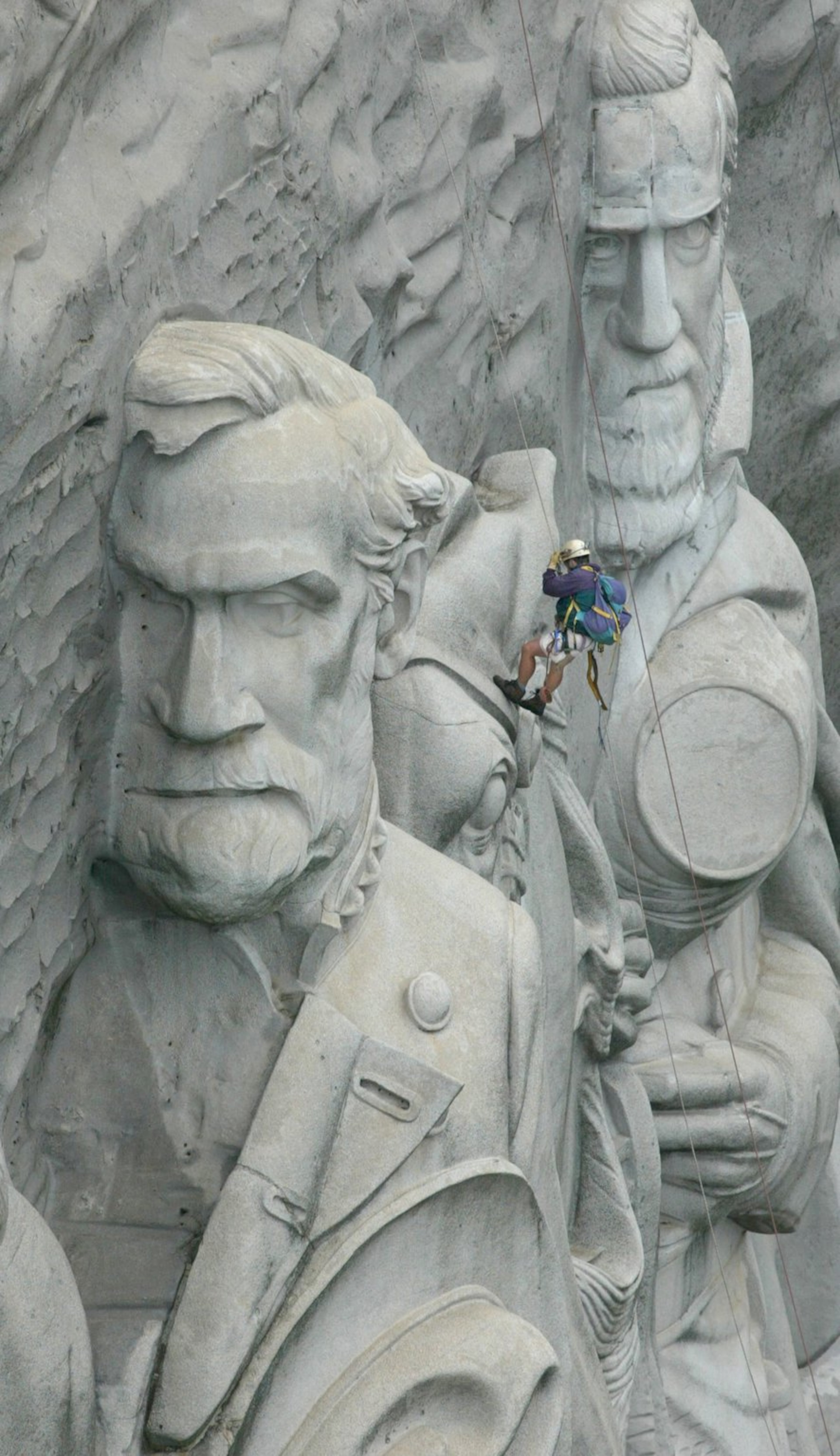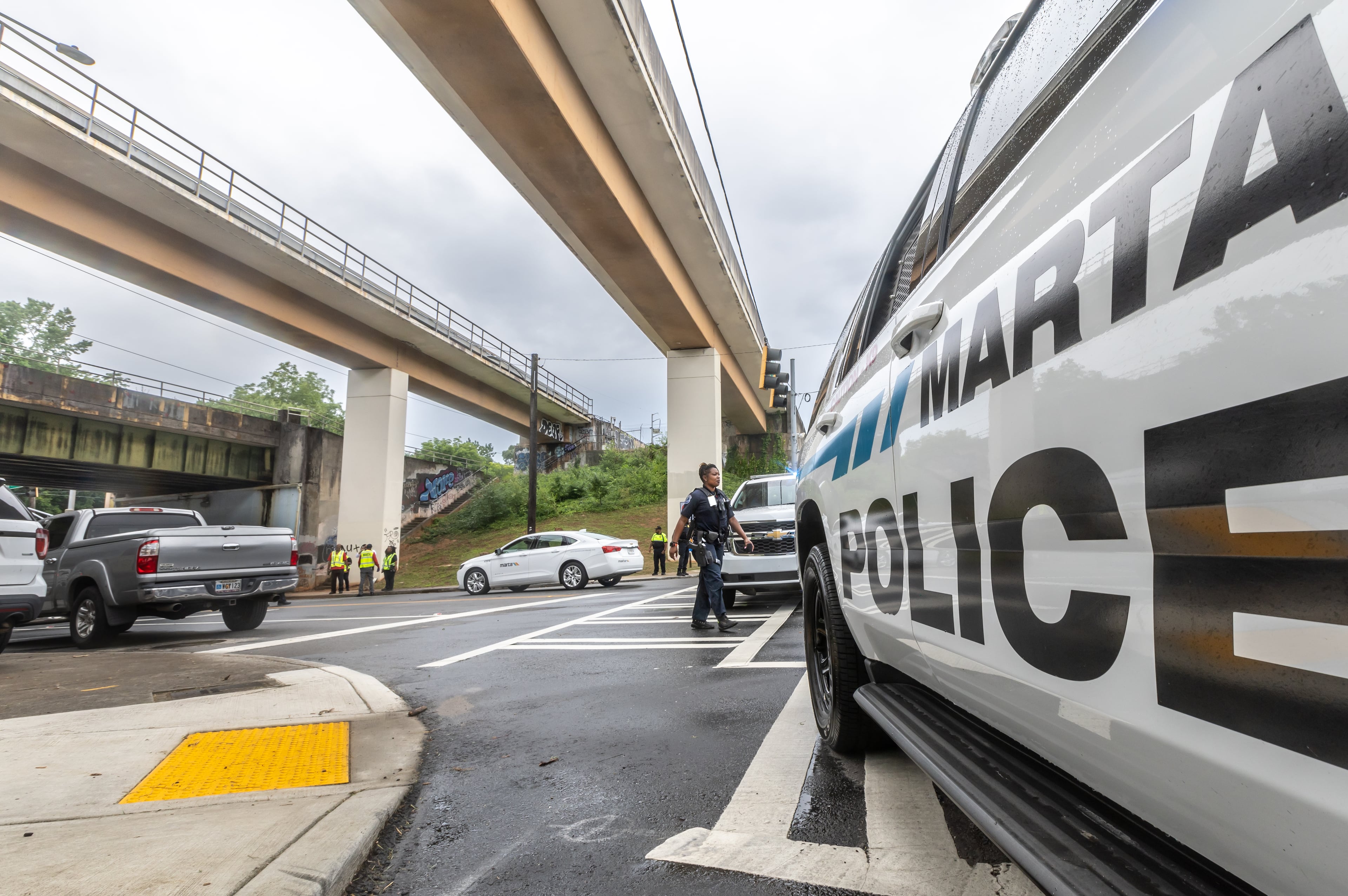How the Confederates might actually come off Stone Mountain

With Confederate monuments coming down across the country and debate raging over whether they should be removed, attention has turned once again to the largest Confederate monument of them all, Stone Mountain.
This week, a gubernatorial candidate became the latest to call for removal of the massive high-relief sculpture from the side of the mountain. A state law makes it
unlikely the sculpture will ever come down. Protests against removal would be epic. Yet, removing it is not impossible.
What would it take to erase it from the face of a mountain?
» PHOTOS: Confederate memorials in metro Atlanta
» TORPY AT LARGE: Confederate monuments tell an incomplete tale
“You could pack it full of dynamite and blow it all the way to Lawrenceville, but you don’t want to create such a hazard,” said Ben Bentkowski, president of the Atlanta Geological Society. “Removing a gigantic sculpture off the side of a mountain is not a trivial undertaking.”
We asked Bentkowski and other geologists to leave aside political considerations and just think about the logistics of erasing the giant sculpture. They all agreed that removing it is an achievable, if costly, engineering feat.
Here’s how it might go. And it does not involve a giant sandblaster.
First, there would be the quiet, tedious work: months, if not years of environmental impact and engineering feasibility studies, Bentkowski said. The economic impact on the surrounding theme park and attractions would have to be considered as well, since those would probably have to close during the demolition.
Contractors would have to bid for the work, exposing themselves to dangerous backlash. Companies that bid to remove Confederate statuary in New Orleans this year received death threats causing some to back out of consideration. The crews who did the work wore flak vests, helmets and masks.
» RELATED: Exactly how big is the granite carving on the side of Stone Mountain?
Once a team was put in place, how would they move forward?
There’s the non-explosive option, said Derric Iles, the state geologist for South Dakota, home to Mt. Rushmore, which was carved by the first of three sculptors who worked on Stone Mountain. Air chisels and air hammers could be used, but only if “you have all the time in the world,” Iles said.
And money. So that brings it back to explosives.
» RELATED: DeKalb’s CEO on the complicated legacy of Stone Mountain
» RELATED: Abrams calls for removal of Confederate faces off Stone Mountain
If you’ve ever descended into the bowels of the Peachtree Center MARTA Station, you’ve seen what targeted explosives can create; tunnels big enough for a train to run through. The stone walls bear the scarring from explosives and the holes bored to put them in place. That’s what would happen at Stone Mountain.
Work stations would be built on top of the mountain, and scaffolding to support the workers, would be operating hundreds of feet up.
Project managers would have to decide whether they want to blow the whole sculpture or preserve parts of it for some other use. Stone Mountain rock has been used for foundations, from metro Atlanta bungalows to the Lincoln Memorial to parts of the Panama Canal.
» RELATED: Meeting and remembering the man who carved Stone Mountain
The workers would drill holes into the rock that would hold the explosive charges. It wouldn’t happen quickly. Drilling is complicated, and doing it safely could take six months to a year, Bentkowski said. At least one worker fell to his death during the multi-decade span it took to create the relief there today.
With the holes in place, bit by bit, the image would be blasted away, but the fallen debris would create an excavation site. The rubble would have to carted away at every stage, adding time and expense.

It wouldn’t be the only time explosives have been used on the mountain. The original version of the memorial begun by Gutzon Borglum, in the 1920s, only got as far as the sculpting of Gen. Robert E. Lee’s head. Borglum didn’t complete the project and went out west to blast away rock that became Mt. Rushmore. But the work he left behind on Stone Mountain was removed with dynamite by the second sculptor, Augustus Lukeman. Lukeman then chiseled a new vision, one that became the three horsemen: Lee, Jefferson Davis and Stonewall Jackson.
The whole deconstruction process could take a year or more, and a gaping, three-acre hole would be left. What would go in its place?
“Whatever you could find the funding and social will for,” said Bentkowksi.
» RELATED: Andrew Young opposes fight over Confederate statues
» RELATED: There are hundreds of Confederate monuments, no just in the South
Explosives aren’t the only option. The relief could be covered, said Robert Hatcher, distinguished scientist in geology at the University of Tennessee. The figures would be smoothed down, then the area filled with concrete.
“It wouldn’t be very pretty,” Hatcher said. “It would deface the mountain. I guess you could paint a mural over it.”
It might not be as disruptive and expensive as mining away the sculpture, he said, but it would still take millions of dollars in taxpayer money to complete.
Whatever happens to the contentious memorial, one thing is certain, Bentkowski said.
“It’s a really big piece of rock that’s been there hundreds of millions of years, and once we humans get done messing with it, it’ll be there hundreds of millions of more years,” he said.



